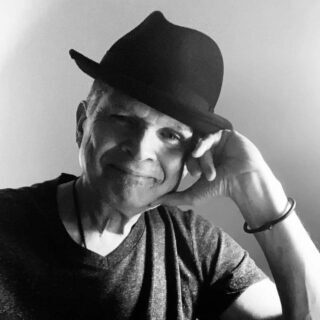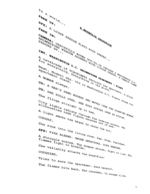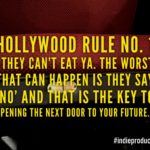Hollywood Ideas Are Not Sacred
Though some will opine ‘ideas in Hollywood are like butts, everybody has one,’ sometimes two, most will not admit to being open to ideas. Sounds like some strange paradox, doesn’t it?
Most creatives I have encountered in my career are completely closed-off to ideas. You probably are thinking, “Then how do they get ideas?” Most steal them from others. Hence, the apocryphal stance there are no new ideas.
Those “creatives” do not want to hear ideas from others, because it was not their idea to begin with. They are really afraid of someone having a better idea than them. Typical inferiority complex in a town (industry) where collaboration is key to success.
The true creatives develop ideas based upon their goals and collaborate with other creatives to bring those ideas into life as a story.
Where Is Your Inspiration
Jeff Nichols (“Loving” “Midnight Special” “Mud”) states in his MovieMaker Magazine interview, inspiration is all around you, you essentially have to find a method to capturing those ideas and determining whether or not they make a story, a feature film or, series screenplay.
A lot of creatives I have worked with in television usually have a nugget of an idea and depend on teams to add-to, or subtract-from, those nuggets until a wholly fleshed-out idea, or concept, is realized. This workflow is typical in television writing staffs working with the showrunners, creators, and similar creatives.
In the feature film world, solo screenwriters typically find those ideas and craft stories out of them. Sometimes with input from directors and/or producers, or even co-writers.
“Don’t think about what the industry wants out of you, or what was successful last week. That’s a real fool’s game, though it’s tempting.”
– Jeff Nichols
In Hollywood Nobody Cares About Your Idea
This pretty much sums up all in Hollywood – nobody cares about your idea. Remember the butts, above? The inspiration of an idea is one thing, the execution of that idea into a stated goal, a story, a screenplay, a series bible, is what Hollywood cares about. And, you should too.

“The fact is, a lot of people have ideas, but I’ve conditioned myself, as a storyteller, to latch onto ideas and explore them. Sometimes they run their course. Sometimes they turn into a whole film.”
– Jeff Nichols
Find a system, pencil and paper, software, index cards, or whatever works for you, create those ideas and develop them into stories, or series bibles.
The Development System
Over the years based upon trial and error, my own system has developed, including exploring what other creatives try. I still use a combination of pen and paper, supported by digital solutions.
An idea will come to me from anywhere. Something I saw, heard, overheard conversation, historical event, conversation with friends, the news, etc. etc. etc. will spark my development system.
With a title something to the effect of, ‘Untitled Series Project No 15’ or, ‘Untitled Feature Film Project No 32,’ I will create a folder under my system, and create a folder structure under that as needed. Typically, I will have DOCS, IMAGES, SCREENPLAY, STORYBOARDS, ACTORS, BUDGETS, etc. etc. etc., as folders. Sometimes, I will only have a folder and one text document in the DOCS folder with the premise of the idea I had found. Sometimes that is all that will ever happen to that idea.
Pen and Paper Development System
And, sometimes a full blown project is created. I will write with pen and paper to start development, because I still like the creative feel of pen and paper. That is my old school take. I use a Cross pen with black gel ink rolling ball for Selectip pens. The black ink and texture of it makes scanning that much more legible and clearer.
I use Ampad Evidence Gray Pastel Perforated Pad, Size 8-1/2″ x 11-3/4″ notepads because the white paper is a little too bright for my eyes when writing under a table lamp. The notepad has a matte-type finish and the black gel ink rolls well over it, unlike a ball-tip rolling pen, with less pressure needed. That means a lot towards hand fatigue when you write a lot. I have probably been using these notepads as long as I can remember, which is why I buy them in bulk. With a nice black leather portfolio to keep the notepads from getting disheveled, my basic tool is still pen and paper.
Typically, I will approach approximately 100-pages of handwritten notes when the urge to move to the digital world becomes too much. That urge? It is just a feeling developed over time. I know when it is time to write. When it is time to take all those ideas and create story.
Those handwritten pages will be scanned into PDF files, with a flatbed scanner, and uploaded to the development folder on my laptop as a digital backup, which is also cloned in the cloud. Have never lost a document or screenplay with this system. The original pages are three-hole-punched and put into a view binder with a title page. I would not say I am OCD, but rather very organized.
Digital Development System

Some years ago, I moved away from physical index cards and into digital index cards. My choice of software is Jungle Software’s StoryO. From my written pages, I move those notes and ideas into StoryO.

Once my StoryO development reaches a point – a feeling – I start to write the screenplay. While I have tried most of the screenwriting programs out there, I have always come back to Final Draft. The newest version 10 is just about everything I have ever wanted in my screenwriting program. I do not really care if they claim to be the industry standard (which they are), it is a tool which if it did not exist, I would go back to using a typewriter in the 21st century.
In addition to Final Draft, I have their Writer and Reader apps for my iPhone. Frequently, I will proof, review, etc. on the Writer. If someone sends me a Final Draft FDX file of their screenplay, I can add notations via the Reader app, upload it and share. That notation system of Final Draft’s is the bomb.
And, always remember, ideas in Hollywood are not sacred. The execution and development of those ideas is sacred.
If you really want to become a professional screenwriter, you can find success in the system I have detailed above. Mileage may vary. Seek immediate medical help if you want all your software for free.
Good luck in your writing.
Thanks to the wonderful folks at MovieMaker Magazine, Kelly Leow, and Jeff Nichols: Train Yourself to Be Open to Ideas: Jeff Nichols on Screenwriting – MovieMaker Magazine
– Stan


!["Crazy Bitches" (2014) [Courtesy Crazy Bitches]](https://stanleybgill.com/21/08/wp-content/uploads/2020/04/crazy-bitches-2014-150x150-1.jpg)






